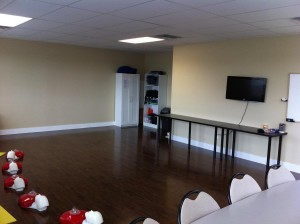
Basic Life Support is not a new thing – it has been around since the 1700s, when mouth-to-mouth resuscitation was used to rescue drowning victims. Training programs for Basic and Advanced Life Support are available at all of our training locations, found in six cities all over the country. Enrollment is quite simple and hassle-free as well. You can sign up for basic and advanced courses on our provider location pages, using the online forms. Forms are available throughout the day, same with e-mails if you want to enroll through an e-mail. Telephone calls and walk-ins are encouraged by all our providers.
The development of ACLS and PALS training
The earliest use of a component skill of CPR was in the 1700s, when the Paris Academy of Sciences officially recommended the use of rescue breaths through mouth-to-mouth resuscitation to revive drowning victims. It was from this principle that more research was done on other skills to help unconscious and unresponsive victims become stable. Mouth-to-mouth resuscitation remains an important skill in basic CPR today, along with compression and defbrillation.
However, as technology became more specialized, CPR become more and more advanced as well. The three basic CPR skills in compression, ventilation, and defibrillaton is enough to stabilize the victim before medical help arrives. As the victim is cared for by medical professionals, medical management involves additional skills and techniques to manage the situation.
ACLS and PALS
The term medical management covers the use of medical equipment, medication, and diagnostic examinations to stabilize a victim of cardiac arrest. Training programs that teach these skills are categorized under Advanced Life Support. Our training providers have two ALS programs – Advanced Cardiac Life Support (ACLS) and Pediatric Advanced Life Support (PALS). Both programs tackle medical management skills but the victim age group focus is different between the two. ACLS is for adult victims while PALS is for pediatric victims.
Training programs
In our location, there are eight total training classes available. Out of these eight,. five arectraining programs and three are re-certification classes. The five programs are further categorized under Basic Life Support and Advanced Life Support.
- Heartsaver training – basic CPR training for the public that teaches one-person rescue, 4 hrs. long
- Heartsaver C training – basic CPR training for healthcare providers that teaches one-person rescue, 4.5 hrs. long
- Basic Life Support for HCPs – basic CPR training that teaches both one and two-person rescue and the 2010 CPR guidelines from the AHA, 4.5 hrs. long
- Advanced Cardiac Life Support – advanced CPR training for HCPs, 16 hrs. long
- Pediatric Advanced Life Support – advanced CPR training for HCPs, 14 hrs. long
Re-certification is offered for three of our courses: Basic Life Support for HCPs, ACLS, and PALS programs. Certificates that you receive from any of the programs above are only valid for two years; afterwards, they have to be renewed through re-certification training. Re-certification can only be taken if your credential is still valid. Expired certificates cannot be renewed and the rescue has to retake the training program.
